For many people, their carefully tended lawn is a source of great pride, so when unsightly mushroom start springing up, it’s time to take swift action to make sure the infestation doesn’t get out of hand.
It’s a problem lots of homeowners will be familiar with, and when it happens, you need to know what to do – so to help, in this post we give you 21 tips to get rid of mushrooms in lawns, allowing you quickly to return your grass to its former glory.
If you want a preview of some of the things we’re going to be talking about, you can check out this video before reading on.
What are mushrooms?
It might seem a little obvious, but if you want to deal with a mushroom problem in your lawn, first you need to know a little bit about what mushrooms really are.
In fact, mushrooms are only a small part of the organism. They are the part that emerges from the ground to release the spores, but most of the fungus actually lives below the ground.
When the spores are released into the air, they are carried by the wind, insects, birds or animals, and if they land somewhere suitable, they grow, sending out “roots” – known technically as hyphae.
These hyphae spread below the surface, creating a fungal mat, and when they are ready to spread again, they send up mushrooms full of new spores to continue the process.
This means that to rid yourself of mushrooms, you need to destroy the whole organism below the surface because if you just remove the mushrooms, the fungus will just send up more and the problem will keep coming back.
Why you should Kill mushrooms from your lawn
For the most part, mushrooms and fungus won’t harm your lawn, but there are several reasons why you might want to remove them.
The most obvious reason is that mushrooms can be unsightly. If you prefer the look of a carefully tended lawn, a clump of mushrooms growing in the middle might not be ideal.
Furthermore, they can affect the value of your property if you want to sell it, so you might not be too pleased when they start popping up in the center of your grass.
Another consideration is the fact that some mushrooms can be poisonous, and if you have pets or children, this could be a worry. In this case, it might be advisable to take remedial action against the unwanted growth.
To find out a bit more about poisonous mushrooms, check out this video.
Some types can be smelly too – for example, the aptly-named stinkhorn – and if you have these growing in your garden, it is understandable that you might want them gone.
Finally, when the growth of the fungal mat becomes too thick, it can choke your grass, causing patches of your lawn to die – in which case, you will have no choice but to take action if you want to restore your lawn to health.
How can you prevent fungus from invading your lawn?
Fungus thrives in moist areas with plenty of shade, and it feeds on decaying organic matter. This means if you remove these three elements, the fungus will not be able to grow and the problem will disappear – so this is the essence of your strategy for dealing with mushrooms.
Now let’s look at all the different techniques and tricks you can use to make your lawn less attractive for your fungal foe.
1. Water deeply but less often
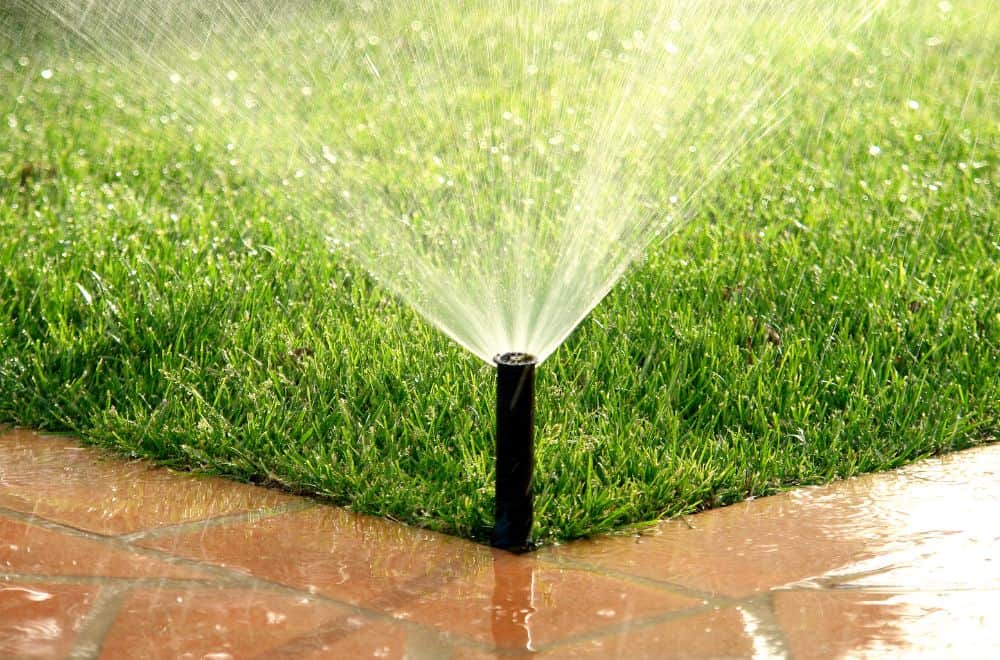
Since mushrooms require moisture to grow and thrive, the first thing to do to prevent them from becoming established is to water your lawn deeply but less often.
This will enable the grass to absorb more water – and will also help your grass grow stronger roots – but it will allow the ground to dry out between waterings, discouraging the fungus from moving in.
2. Water in the morning
Always water your lawn in the morning. As with #1, this will allow your grass to absorb all the water it needs, but the sun will then dry the ground, making it more uninviting for fungus.
Conversely, never water your lawn in the evening since the ground will stay moist all night creating the ideal conditions for fungus to start growing.
3. Water shady areas less
Be aware of the areas of your lawn that receive move shade and water these areas less. This is because they will take longer to dry out, so if you water them too much, fungus will have a chance to develop in the areas that remain wet for longer.
4. Aerate your lawn
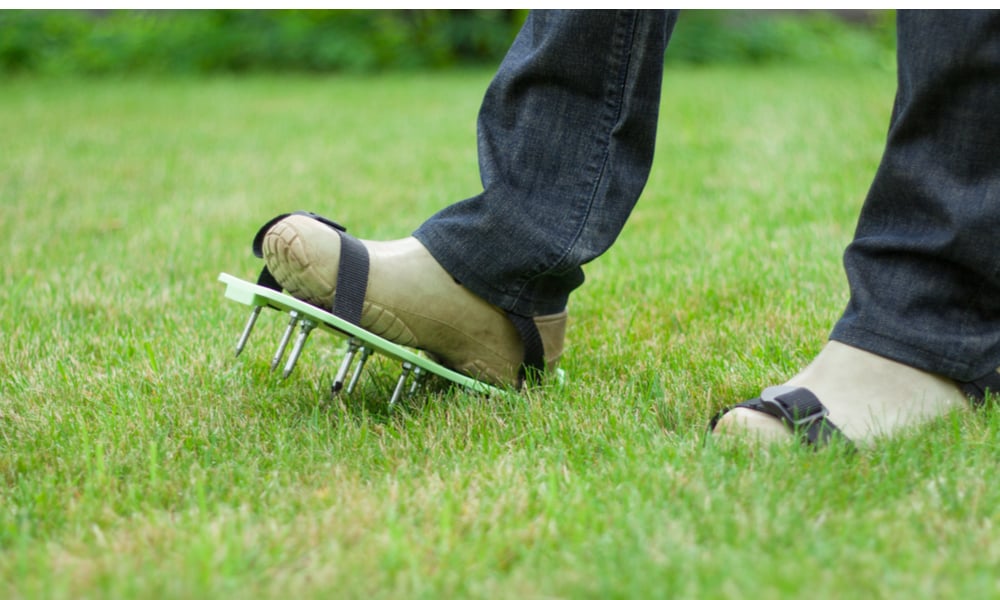
Aerating your lawn can be an important aspect of preventing fungus since it increases the drainage of your lawn.
It’s easy to do using either a regular garden fork, aeration sandals or a dedicated aeration machine and is an effective way to prevent fungus from becoming established in your lawn.
5. Remove thatch
Removing thatch from your lawn has a similar effect to aerating it, making this another weapon in your battle against invading mushrooms. Making sure thatch doesn’t build will increase your lawn’s drainage, and fungus will have a harder time becoming established.
6. Other actions to improve drainage
Making sure the ground doesn’t remain moist is key in fighting fungus, and there are several other actions you can take to improve drainage.
For example, one idea is to add a French drain to your garden to give the water somewhere to collect and run off.
If you live in an area where the soil has a high clay content, mixing sand into the ground will also improve its ability to allow water to drain off more efficiently.
7. Add a pond or water feature
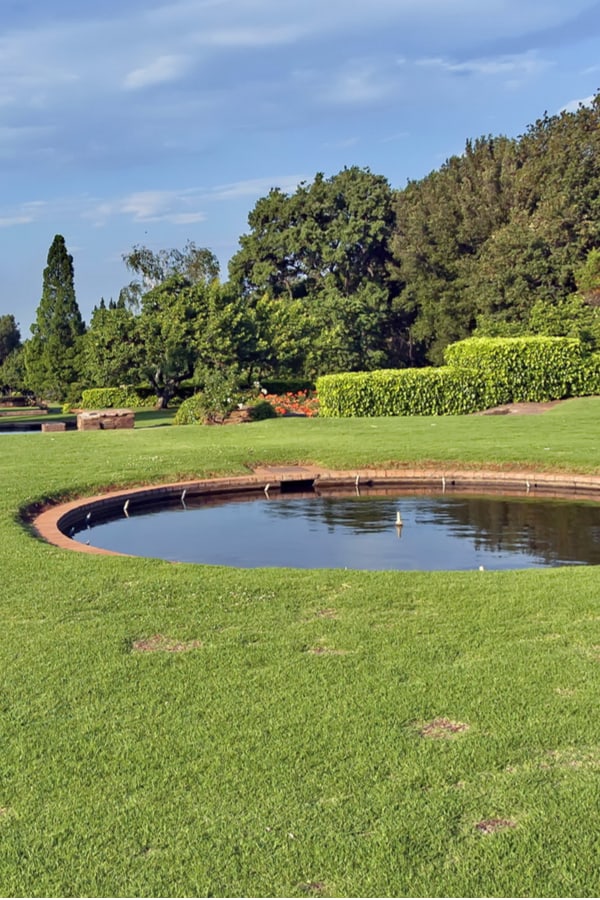
Another idea to prevent water from building up in the soil is to add a pond or other water feature in a strategic position. This way, water will collect in the pond rather than soaking the ground and allowing fungus to grow.
8. Use rain barrels to catch water
If you have a problem with rainwater covering your lawn during storms, try placing rain barrels to catch the runoff. This way, less water will soak the lawn – and you can also use it later for watering during periods when it rains less.
9. Keep grass short

Keeping grass properly mown is another way of reducing moisture since lawns with shorter grass will dry out quicker than those with grass that is left to grow long. However, don’t cut it too short either, or you will damage the grass and leave it vulnerable to other problems.
10. Prune trees and trim branches
Other than moisture, shade is the other factor that can encourage fungus to grow. To this end, if possible, try pruning trees and trimming branches that cast shadows over your lawn. This will allow the sun to shine through, making your lawn less hospitable for fungus.
11. Pull up mushrooms before mowing
When you mow the lawn, pull up any mushrooms that are visible before you begin. If you don’t, the mower will slice through them, sending the spores into the air and potentially making the problem much worse.
12. Pull up mushrooms as soon as they appear

When you see mushrooms growing in your lawn, pull them up by hand immediately. This way, you will get them before they release their spores.
This won’t kill the fungus below ground, but it will stop them from spreading further and will help you keep the mushrooms under control.
13. Deal with fairy rings
Fairy rings appear as either rings of mushrooms, rings of darker grass or rings of dead grass. The exact process leading to their formation is imperfectly understood, but the way to deal with them is widely accepted.
First, you need to dig into the ring to establish how deep the fungal mat is. If it is less than three inches, you can deal with the ring simply by aeration, but any deeper than this and you will need to dig it out.
If you dig the fungus out, you need to dig to a depth of at least 12”, removing a circle at least 24” outside the fairy ring itself. You then need to fill the circle with uninfected soil and reseed.
For more info about fairy rings, check out this video.
14. Dispose of mushrooms properly
Whether you are pulling up mushrooms before mowing, pulling them up as they appear or digging up fairy rings, it is essential that you dispose of the mushrooms correctly, either bagging them up and binning them or incinerating.
If you have a compost pile, don’t throw the mushrooms on or they will just continue growing there, possibly reinfecting your lawn later.
15. Use a nitrogen-rich fertilizer
When fertilizing your lawn, use a fertilizer that is rich in nitrogen. This will speed up the decay of carbon-rich material, reducing the food the fungus relies on.
16. Remove decaying organic matter
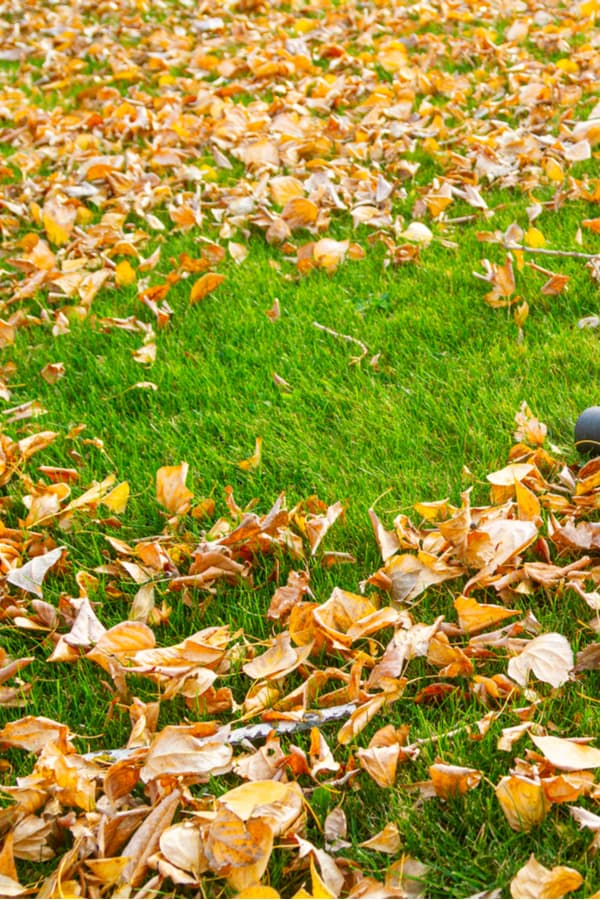
To prevent fungus from developing, be meticulous about clearing up any decaying matter that may attract fungus in the first place. This means raking up leaves in the fall and bagging up cuttings when you mow the lawn.
Leaving grass cuttings on the lawn can be beneficial to your lawn, so you don’t need to remove them all – but you need to find the right balance because otherwise, you are just inviting the fungus to move in.
Also, make sure you remove any animal excrement from pets or wild animals you may find in your lawn or elsewhere. Replacing old mulch will also help stop mushrooms in their tracks.
17. Remove decaying materials below ground
Be aware that fungus also develops when material below the surface decays. For example, if you removed a tree but left the stump, that stump can provide a feast for the fungus and may lead to mushrooms springing up.
Similar, if any timber gets buried beneath your lawn – for example, when you had building work done on your property – this can have a similar result.
For this reason, if you see mushrooms growing in your lawn and you don’t know why, there may be something underground that needs removing, so it might be a good idea to dig it up and see what it is.
18. Keep an eye on vulnerable areas
If you have problems with mushrooms, always remain vigilant and keep a special eye on the most vulnerable areas.
Shaded areas or places where water evaporates more slowly are more prone to fungal growth, so pay attention to them so you can catch the mushrooms early when they start appearing.
19. Understand the limitations of fungicide
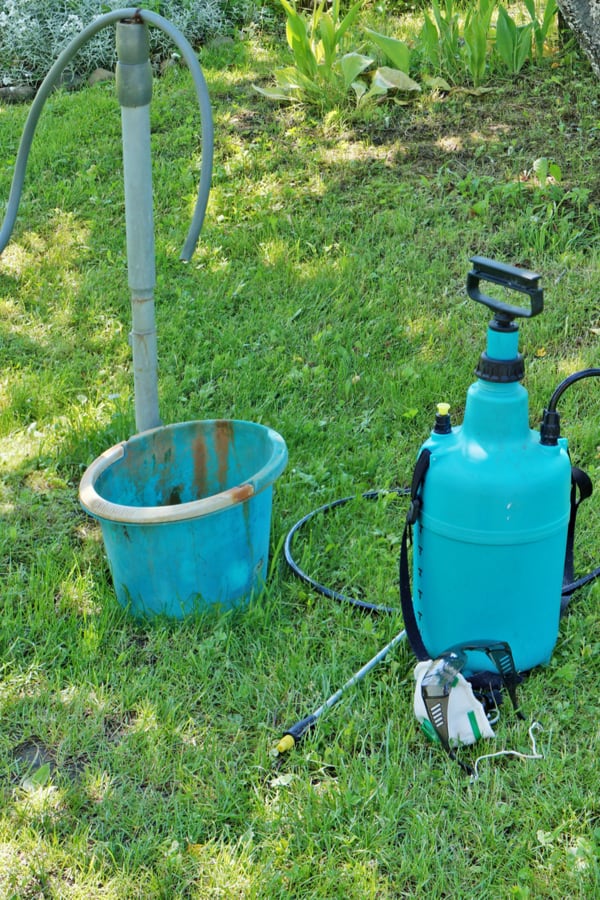
You might think the simple answer to a fungal infestation in your lawn is to turn to chemicals, but fungicides have limited use when it comes to mushrooms.
The kind of fungicides sold for use on lawns are designed for surface fungus like leaf mold or root rot, but they don’t penetrate deep enough into the ground to reach the fungus growing there.
This means they will kill the mushrooms on the surface without having any effect on the fungal mat below.
For this reason, you are better off using the other techniques we have already mentioned rather than relying on fungicide.
20. Try vinegar
That said, you can try making a natural fungicide using white vinegar. Mix four parts water with one part vinegar and use a spray bottle to kill the mushroom above ground.
However, again, this will only deal with the surface mushrooms and will do nothing for the subterranean fungus that produces them
21. Dig up lawn and reseed
If all else fails and you decide to resort to extreme measures, you can simply dig up the whole area that is affected by the mushrooms, dispose of the infected soil, refill the hole, reseed and start again.
Why you should leave mushrooms alone
At the start of this post, we talked about why you might want to get rid of your mushrooms, but you may decide to leave them where they are – and there are good reasons for doing this too.
Mushrooms and fungus are an indication of a healthy ecosystem. They grow where organic matter exists, breaking it down and returning its nutrients to your soil. The root system, the hyphae, also helps the soil retain water, which is beneficial to your grass.
If you decide to go to war against them, it can also take a lot of time and effort before you finally rid yourself of them – so for many people, it’s simpler just to leave them there since a few mushrooms won’t do any harm.
Take a holistic approach – or just leave them to grow
If you want to rid your lawn of fungus and mushrooms, you should take a holistic approach, applying as many of the tips in our post as possible. However, if the mushrooms aren’t causing any harm, it might be better just to leave them, which is certainly a much simpler solution.

Leave a comment